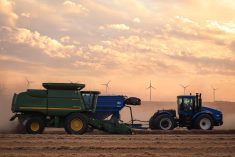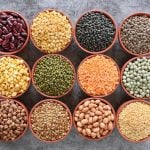MarketsFarm — A state of agricultural emergency has been declared in 12 municipalities, mostly in Manitoba’s Interlake region, due to chronically low hay yields.
Drought and grasshoppers have hindered crops to the point that hay production is about 25 to 30 per cent of average.
“We’ve moved cows out of pastures because the grasshoppers ate everything faster than the cows,” said Mike Duguid, who has farmed ar Arnes, Man., for about 60 years.
Duguid said he finished last year with “not one bale left in the yard” due to consecutive years of lower-than-average hay yields.
Read Also

Pulse Weekly: SPG looks back at harvest, ahead to trade
Saskatchewan Pulse Growers executive director Carl Potts said this year’s harvest had strong yields as the organization now works on international trade.
“Lots of guys are in the exact same position, with no reserves,” he said. “Not 100 bales or anything in your yard to start with.”
Cattle producers in the Interlake have reduced their herds to match feed supply as cattle were turned out onto pastures that weren’t producing as much hay as expected.
“Hay prices are too high to maintain a herd,” said Duguid. “You’ll go broke just trying to feed them.”
Currently, a 1,000-lb. round bale of hay costs about $100 — up considerably from the typical $30 per round bale.
“I doubt prices will drop until we see an oversupply again,” he said.
With the state of emergency, producers in the Interlake are hoping for freight assistance to ship in hay from elsewhere in the province.
Grain farmers in the area have aided livestock producers by baling straw to use to supplement hay stocks.
“That’ll stretch hay supplies way further,” said Duguid. “We’re happy they have come through for us.”
— Marlo Glass writes for MarketsFarm, a Glacier FarmMedia division specializing in grain and commodity market analysis and reporting.
















